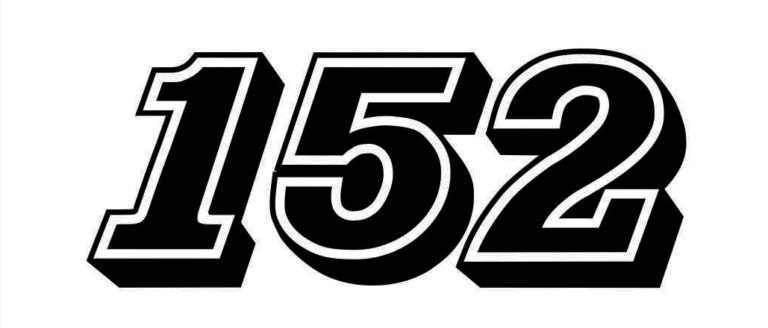





For those of you who are thinking about getting started with a Wrenn 152 collection, there are some obvious points worth considering. When it was first introduced, Wrenn Formula 152 was unique in a number of ways and today, even with the introduction of digital slot racing, Wrenn can still provide a unique slot racing experience. The ability to have three Cars independently racing on each lane and the facility of changing lanes when racing was certainly ahead of its time back in 1960. Wrenn’s space saving scale of 1/52 was also definitely worth considering then as it is today.
If you have decided to take the plunge and purchase your first Wrenn 152 Set, the following will probably be of assistance, especially if you intend to race them. As with all slot racing products that were manufactured over 50 years ago, you will have to be prepared to service the Cars and clean the Track initially before starting to race. If you owned a Wrenn 152 Set previously you will already know the intricacies of the Wrenn AC Vibrator motors and the later rotary DC motor option, but for those of you who are at the beginning of your journey, there are some words of advice on how to get and keep your Wrenn 152 slot racing products working. I have seen many Wrenn 152 Cars offered for sale in various states of repair but since they were well engineered originally and also well built the majority of these Cars can be made to run again. If the various components are still there they can easily be made to work and some spares are still available for any items which may be missing. The following three sections on the Wrenn 152 AC Vibrator-motored Cars, the Wrenn Track and the difference between the two types of Controllers will hopefully enable you to experience (again) some wonderful slot racing items from the 1960’s.
If you are experiencing Wrenn 152 AC Vibrator-motored Cars for the first time it may well be that you have opened the cars and wondered how they actually work since they do not have a recognisable motor. I have heard many descriptive comments over the years and the nearest I have discovered is that the vibrator motors are likened to an old door bell. I apologise but the following is a bit like a school Physics lesson but it may assist with your comprehension of the principles, so please bear with me. When the electrical power is applied to the coil around the metal core it becomes a magnet which attracts a plate (armature) and when this gets to a certain point the current is cut off. This in effect then de-magnetizes the metal core so returning the plate to its ‘rest’ position and then the whole cycle starts again. Each cycle only moves the Ratchet Wheel on the rear axle a few teeth but then since the power is automatically switched on and off quickly it is sufficient to move the car very rapidly and also gives the vibrator motored Cars their unmistakable buzzing sound. Coupled with this is the ability to free-wheel around corners which then requires a very different driving technique.
I would strongly advise anyone who has AC Vibrator-motored Cars for the first time to consult the AC version of the A10 – Wrenn 152 Instruction Manual for initial set up and tuning advice. However you may need the following additional advice when using the Wrenn 152 AC Vibrator-motored Cars for the first time since they will not be new and they are all now over 50 years old. They just need a little care and attention and they will continue to hopefully provide many more years of pleasure.
If you are a recent Wrenn 152 convert it may be that you have just bought the Wrenn 152 Set or Track and if you are using pieces of Track for the first time the track sections may well not have been used previously for a number of years. If this is the case, there could be rusty sections of the conductor rails or even sticky deposits on the Track surface which will all inhibit your Cars running smoothly. Very often after all of these years some items of Track can also have a discolouration of the grey polystyrene surface.
Prompted by the influx of new converts wishing to try Wrenn 152 for the first time, this section aims to assist them when purchasing a Set, or individual items, to easily recognise the difference between the two different Controllers. As the majority of you may already know, Wrenn did ultimately manufacture two different types of Controllers for their different motors within the two Car types.
At the time that Wrenn first introduced their Formula 152 range of slot cars in 1960, you have to remember that slot racing was really its infancy with a number of companies entering this new mass-production market with slot racing products for home use for the first time. So new and different technologies were being tried to find the best solutions for each different manufacturer. Whilst I do appreciate that various different company products had sporadically been available since the 1930’s but it seems to have been only after the rail racing hobby had taken off in the 1950’s that the improvement to using a slot as an alternative which ultimately forced the rail racing fraternity to adopt this new style of racing.
Since there were no readily available motors small enough to fit into their new 1/52 scale Cars, Wrenn decided to design their own motors. The first Cars were powered by a vibrator motor so the E1-Controller was designed with a simple spring-loaded on/off button. This was similar to Scalextric’s solution to controlling their first tinplate cars although that company’s solution was to combine the two controls into one unit and their cars did have relatively standard rotary motors.
Wrenn did provide an option of having their Controllers either permanently fitted to a baseboard for use or just as a method of retaining them safely when not in use. In order to fit the Controllers to a baseboard they were provided with a pair of Black polystyrene slider rail sections with each having two countersunk holes to accommodate 2No fixing screws and an angled side. The Controllers could then be slid between the pair of rail sections and either used directly on the baseboard (similarly to the unit that Scalextric was using as described above) or having them just retained there for protection and then removed for racing. Please see the accompanying photos.
One of the distinct advantages of using a Vibrator motor was that when the power was off, the car could just free-wheel. So driving the Car effectively was to use its ability to power down the straights and then free-wheel around the corners. Wrenn also developed a way of limiting the maximum speed of the motor to enable young children or new drivers to become accustomed to using the slot cars and also to provide another Car, under its own set speed, for individuals to race against. This was achieved with the Cars having their own Speed Control Lever under the Car and for the latter use, the Controller could be locked in the ‘on’ position with the smaller Red slider button.
During 1964 Wrenn introduced their new DC-motored cars and this necessitated the use of a new Controller. This was designated as a Mk2 version of the E1- Controller and whilst it retained the previous style of a Black polystyrene top cover with the addition of a small plinth, a new base was needed to accommodate the additional, but very small, resistance coil which gave the new controllers their variability of supplying the DC power. This meant that the original Red on/off button needed to be upgraded, which was done by enlarging the button to provide a longer travel. The slider button was retained and therefore the controller could now be locked at a set speed since the DC motored Cars did not have the Speed Control Lever to pre-set the speed of the Cars as previous and therefore all control of the Cars was now concentrated within in the Controller. Wrenn also did provide a speed limiting screw under the base. With this increase in overall height of the Controller it also meant that the previously supplied slider rails were now obsolete. So these items are normally found either within the early Sets or within the separate E1-Controller cartons.
So even if you cannot see the identification text under the Controller it is still possible to easily identify the two different versions by firstly looking at the height of the main button and then looking at the height of the base. Please see the accompanying photos to appreciate the differences described.
Ideally the E1-Controllers should be used with the Vibrator-motored Cars and the Mk 2 versions with the DC rotary-motored Cars as Wrenn intended, but it is possible to use an early E1-Controller with a DC Car and vice versa. The only problem that will be encountered is with the actual type of power supply that you intend using. Whilst a Vibrator-motored Car can easily run from a DC supply, the DC Cars cannot run from an AC supply. Another issue with using an E1- Controller with a DC car is that the power will either be on or off so the Car would be almost impossible to control.
At the recent exhibitions that I have attended, I have successfully used a 12 volt DC power supply for both Vibrator-motored and DC Cars, along with the corresponding ‘correct’ Controllers. The only downside is a relatively minor one, of an inconvenience, with having to clean the Vibrator-motored Car’s Contacts a little more frequently.
I do hope that you enjoy being part of a growing group of enthusiasts around the world who enjoy collecting and racing your Wrenn 152 cars. Remember to keep checking on the website for any future developments and products for sale.

